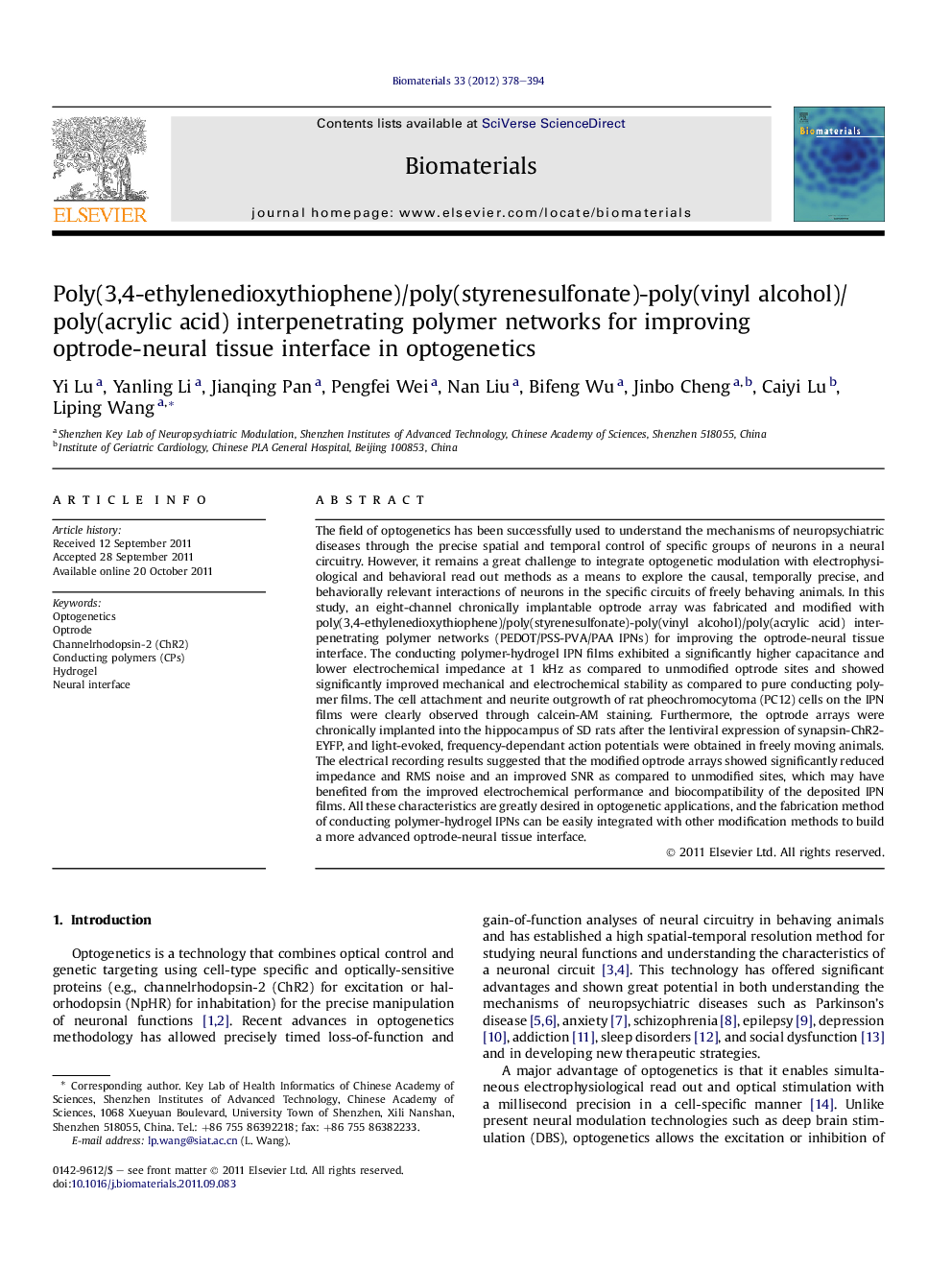| کد مقاله | کد نشریه | سال انتشار | مقاله انگلیسی | نسخه تمام متن |
|---|---|---|---|---|
| 7604 | 558 | 2012 | 17 صفحه PDF | دانلود رایگان |

The field of optogenetics has been successfully used to understand the mechanisms of neuropsychiatric diseases through the precise spatial and temporal control of specific groups of neurons in a neural circuitry. However, it remains a great challenge to integrate optogenetic modulation with electrophysiological and behavioral read out methods as a means to explore the causal, temporally precise, and behaviorally relevant interactions of neurons in the specific circuits of freely behaving animals. In this study, an eight-channel chronically implantable optrode array was fabricated and modified with poly(3,4-ethylenedioxythiophene)/poly(styrenesulfonate)-poly(vinyl alcohol)/poly(acrylic acid) interpenetrating polymer networks (PEDOT/PSS-PVA/PAA IPNs) for improving the optrode-neural tissue interface. The conducting polymer-hydrogel IPN films exhibited a significantly higher capacitance and lower electrochemical impedance at 1 kHz as compared to unmodified optrode sites and showed significantly improved mechanical and electrochemical stability as compared to pure conducting polymer films. The cell attachment and neurite outgrowth of rat pheochromocytoma (PC12) cells on the IPN films were clearly observed through calcein-AM staining. Furthermore, the optrode arrays were chronically implanted into the hippocampus of SD rats after the lentiviral expression of synapsin-ChR2-EYFP, and light-evoked, frequency-dependant action potentials were obtained in freely moving animals. The electrical recording results suggested that the modified optrode arrays showed significantly reduced impedance and RMS noise and an improved SNR as compared to unmodified sites, which may have benefited from the improved electrochemical performance and biocompatibility of the deposited IPN films. All these characteristics are greatly desired in optogenetic applications, and the fabrication method of conducting polymer-hydrogel IPNs can be easily integrated with other modification methods to build a more advanced optrode-neural tissue interface.
Journal: Biomaterials - Volume 33, Issue 2, January 2012, Pages 378–394